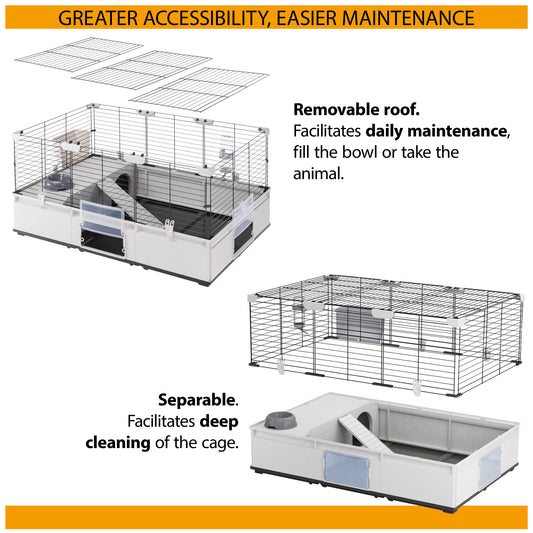It’s not uncommon for an outdoors cat to provide you with some panic and return home late on occasion. However, if your cat has been missing for 12 hours or more it could be a sign that they have become lost or got themselves into a spot of bother.
What to do
If your cat has wandered off and not returned there are some things you can do to get their attention. Call their name while shaking a box of cat biscuits – do this at night if that’s the time your pet is most active – or leave some food, their bedding or a favourite toy in the garden to entice them back.
Before you start searching further afield, make sure that your cat isn’t hiding (or stuck somewhere) at home. Cats love small spaces and can often get themselves stuck. Check every room in your house and any outbuildings and sheds too. If you’re having building work done, this could create some new opportunities for your cat to explore and get lodged. It is not unusual for cats to be found under floorboards!
Speak to your neighbours to see if anyone has seen your cat. You might find that your pet has been visiting other homes in the neighbourhood. There may even be residents that have fed your cat thinking it was a stray.
If you’ve recently moved house your cat could have returned to their old home. It’s worth speaking to the new residents to ask them to keep an eye out for your pet and to contact you if it turns up on the doorstep.
Check their chip
If your cat is microchipped you should inform the database company that they have gone missing. This is important in case your pet has been stolen and someone tries to change the microchip details. If you are unsure which of the microchip databases your pet is registered on, visit check-a-chip.co.uk to find out.
Contact local vets and rescue centres
Get in contact with rescue centres in your area to see if anyone has handed in your cat thinking it’s a stray. You should also contact local vets in case your cat was injured during their adventures and taken to a surgery for treatment.
Spread the word
Social media is a very effective and free way to spread news so post a photo of your missing cat and share with your friends, community pages, local businesses and vets. Ask them to share your post to their contacts too. Some local newspapers have lost and found sections in which you can advertise lost pets.
You could also make some posters or flyers including a couple of recent photos of your cat and stick them up in shop windows, community noticeboards and vet surgeries. You could also post them through doors in your neighbourhood and ask people to check their sheds and outbuildings for your cat.
Reunion
When you get your cat back – or when they turn up of their own accord – give them some of their favourite food while you check them over for any signs of injury which could need veterinary attention. If you have any doubts about their health, make an appointment to see your vet for a thorough check up.
Prevention
The law is set to change with regards to microchipping cats in a bid to help reduce the numbers of lost cats that end up in rescue centres. Under new plans announced by the government in 2021, all keepers must ensure their pet is microchipped before they reach the age of 20 weeks and that their contact details are stored and kept up to date on a pet microchip database.
If your cat is not already microchipped it is a good idea to get it done as soon as possible to increase the chance of being reunited. It is a simple, painless procedure which involves inserting a small chip under a cat’s skin that contains a unique serial number. Speak to your vet or local rescue centre to find out more.
8 out of 10 stray cats taken in by Cats Protection are not microchipped and have no collar ID, making reuniting them with their owners virtually impossible. It’s no good having a microchip if the details held on the database are out of date. Make sure that if you move house or change your telephone number you inform the microchip database of the new details as soon as possible.
Your cat should also have external identification, such as your name and contact number on an engraved tag that is fitted to a cat-safe, quick-release collar.
There are high-tech solutions these days for keeping tabs on your cats, like GPS trackers which can be worn on the collar. From an app on your mobile phone, you can get a live location update for your cat, giving you peace of mind if your cat doesn’t arrive home in time for tea. Although, these can be expensive and require you to pay a monthly subscription for the service.
If you found this article interesting, why not check out:









